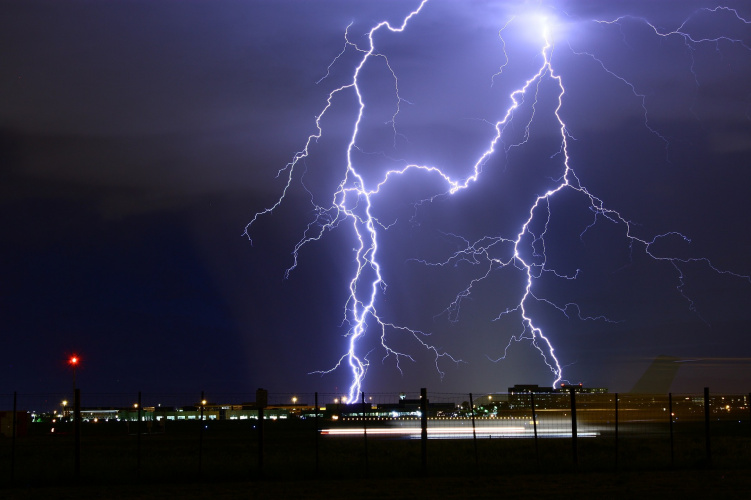 A spate of energy stories reveals just how complex the electricity landscape in the UK has become, says Stuart Nathan
A spate of energy stories reveals just how complex the electricity landscape in the UK has become, says Stuart Nathan
As the old adage goes, things come in threes. This week has seen a trio of issues regarding the energy landscape in the UK come to the fore. In Scotland, the Hunterston B nuclear power station has been given the go-ahead to restart after being taken out of service following the discovery of hundreds of hairline cracks in the graphite of one of its reactor cores. In southern England, a report into a power cut two weeks ago which coincided with a severe – but not unusual for the time of year – thunderstorm concludes that outages at a wind farm and a gas-fired power station had triggered automatic disconnection of millions of customers, and resulted in travel chaos the following day because many trains were out of position. And in northern England, shale gas reserves may be far below previous estimated levels, according to a report published in Nature Communications.

If nothing else, these three events reveal just how complex – and interdependent – the electricity generation landscape in the UK has become over recent decades. Taken individually, each tells us something (but frustratingly, little conclusive) about the different modes of power generation we now depend on. Looked at together, they reveal the hazards of the system which was not, and could not have been, designed with these interdependencies in mind.
Hunterston shows us the gaps in knowledge of nuclear power generation that existed when it was built in the early 1970s. Its reactors, (of which there are four, two of which are being decommissioned) are of the advanced gas-cooled reactor (AGR) type unique to the UK, although like all of Britain's operating nuclear power stations, it is owned and operated by EDF Energy, the French state owned energy giant. Its two operational reactors have in fact been shut down since last year, when more cracks were found in the graphite bricks that form their cores than were allowed under the operational guidelines. Graphite tends to crack after being irradiated by neutron bombardment, which was not well understood when the AGRs were built: it remains difficult to simulate and test these conditions even now. The UK Office of Nuclear Regulation (ONR) has now accepted that the safe limits for cracking should be increased from 350 cracks per reactor to 700, but has only approved the operation of the reactor for four months. Beyond that, ONR says, EDF will have to justify safe operation.
Cracking in AGR graphite cores is the subject of much research. The Engineer has previously reported on a project at Bristol University to build a sensor-equipped scale model of an AGR core to be tested on the university’s seismic shaking table, to determine whether such reactors would be safe to operate after an earthquake (unlikely in the UK, but not impossible). The state of these assets is undoubtedly a concern, owing to their age and the lack of other models around the world where operational experience might be a guide: owing to the way that the nuclear industry developed in the UK, nobody else ever built one. New reactors slated for construction are of a more common type, and so there is at least a wider pool of operational experience to draw upon. However, the huge cost and political controversy surrounding these reactors is currently making their construction somewhat uncertain, and the drive to develop small modular reactors, although welcome, does pose the risk of creating more stranded assets like the AGR unless other countries order and build them. Almost three quarters of a century after the dawn of the nuclear age, it remains a sector with problems to which there are no easy answers, and the expertise of engineers is the only option to find solutions.
The power cut shows us how closely connected the diverse systems that generate power are, and frustratingly we are no closer to finding out what actually happened then we were a fortnight ago. A lightning strike hit a transmission circuit in the late afternoon of 9th of August, and the National Grid protection systems cleared this problem in less than a second. But moments later, and it is unclear why, the Hornsey offshore wind farm and Little Barford gas-fired power station, more than a hundred miles away from Hornsey, both went off-line. According to an interim report from the National Grid, these outages were "associated with" the lightning strike, but it has issued no further information. These outages took almost 1.4GW of generation out instantaneously, and only 1GW is held in reserve, so the system automatically disconnected users from the distribution grid, leading to lights going out and trains stopping. Around 5% of energy demand was turned off, the biggest outage in the UK in over a decade. I was not in London at the time, but the stories of commuters having to use torches on their mobile phones to navigate out of King's Cross and Euston underground stations after the lighting failed sounds like something out of an apocalypse fantasy.
No doubt more detail will emerge on exactly what happened at Hornsey and Little Barford – inevitably, social media was full of proponents of renewables and fossil fuel generation busily and unedifyingly blaming their unfavoured systems for the outage. It's been clear for years that the distribution grid needs to be updated to cope with the differing capabilities of the various types of generation that meet UK demand, but the task is Herculean and this event shows just how complex it might be – and moreover, 1GW is obviously not enough to keep in reserve.
The shale gas report gives us more uncertainties. The British Geological Survey sponsored studies at Nottingham University to try a new technique to estimate the amount of gas held in shales. This technique, hydrous pyrolysis with a wet system, reproduces the way that water and gas leave shale rock when it is heated, using small samples of rock as a test resource. According to these tests, there might five times less gas remaining in the Bowland Shale formation in northern England, which is the target for much of the fracking explorations currently being considered, than was previously estimated. The missing gas may simply have escaped over time, with the previous high estimates resulting from mistaken assumptions such as analogy to shale rocks in the US and that the gas reserves in the UK were at a suitable depth to be recovered. However, the BGS stresses that the Nottingham study only looked at a small number of rock samples from two locations, and fracking proponents continue to claim that the only way to be sure is to carry out fracking tests – which continue to be fiercely opposed by local communities.
No commercial operation likes to be told that their proposed moneymaking scheme isn't going to work, so it's unsurprising that the pro-fracking lobby is still keen on fracking, and more tests will obviously have to be done. But shale gas exploitation in the UK was never a done deal, and geologists and engineers have both warned of the dangers of extrapolating from experience in other parts of the world. The Nottingham tests are, if nothing else, a further illustration of these dangers and a warning against counting your chickens before the eggs are hatched – or in this case, before they have been laid.
It's an unhelpful but inescapable conclusion that when it comes to electricity production, we can't take anything for granted and that the informed views of the engineering community, based on their observation of the many systems in operation, are more vital than ever to those planning the future of power generation and distribution.










Water Sector Talent Exodus Could Cripple The Sector
Maybe if things are essential for the running of a country and we want to pay a fair price we should be running these utilities on a not for profit...